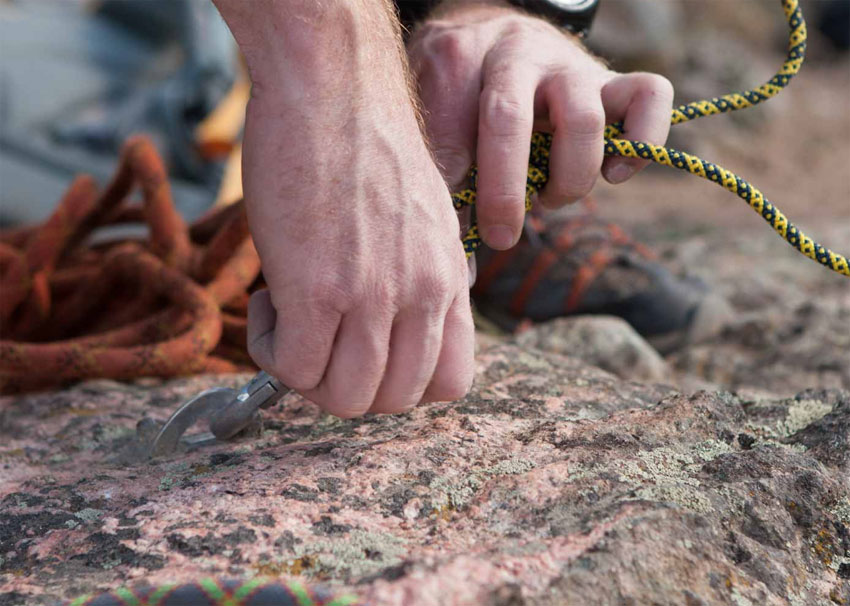Fitness conditioning for mountaineering becomes an even greater focus for me as winter gains momentum and the snow continues to fly. In preparation for a winter of guiding backcountry ski touring and mountaineering, as well as leading avalanche education courses, i think about what is most important at this stage of the game – if I’ve kept up with strength training, it’s cardio and core.
I love a good workout with weights, and it goes without saying that strength training is a part of any good fitness regimen and I’ll continue that effort. As I prepare for moving in the mountains I know that an increase in cardio and core activity are essential to athletic performance.
Cardiovascular health and strength are important components of any high altitude training program, and specifically for fitness conditioning for mountaineering. Recommendations vary, but a good target heart rate for cardiovascular training is 55-85% of your maximum heart rate (or MHR). MHR is calculated by taking your age and subtracting it from 220.
Monitoring your heart rate throughout physical activity is important to ensure that you train in your target range. I like to use my Garmin Fenix 5x with a chest strap as a heart rate monitor (find this and other options on REI or Amazon’s website). There are many on-body options; but typically chest straps are superior to wrist watch monitors. Many machines also, have grips that give heart rate information with reasonable accuracy.
There are many types of cardio, including treadmills, stair master, stationary bikes, road bikes, hiking, seated bikes, rowing machines, ski conditioning classes and more. Skinning on snow, backcountry skiing/splitboarding and mountaineering consume a lot of my time during the winter; I like to emulate my uphill movement with a warm up on the treadmill. By pulling my belly button in tight towards my spine (this technique can be used in virtually any core exercise to increase the load and development of core muscles), I can work obliques, abdominals and lower back muscles that will be used on the snow. This also allows me to train my body to naturally keep these muscles more engaged when I get out in the mountains. This helps protect the rest of my body from unnecessary exposure to injury.
After a short warm up of 15-20 minutes on the treadmill I move to a stationary bike. I don’t bother with a warm up stage on the bike. I’m already warmed up from the treadmill and the objective with the stationary bike is to get my heart rate much higher than It was on the treadmill. This is done by going immediately into strenuous activity.
By gripping the heart rate grips on the bike or monitoring my heart rate on my Fenix 5X, I bring my heart rate quickly into my target zone and then maintain that heart rate for 20 to 30 minutes. My aim is to complete this cardio work out, or comparable activity, at least three times a week. For me, this, combined with some high altitude activity and skinning up the resort hills, is a good target frequency to increase my cardio performance and prepare for high altitude winter activity with clients.
There are a myriad of core training options. I like to ensure that I am developing three areas of my core strength and stability: anti-extension, anti-rotation, and anti-lateral flexion. It’s a given that during mountaineering and back country skiing activity I will have some flexion at the core. Strength in these three areas, along with lower back strength and collaborative muscle group strength developed through ancillary strength training, will ensure that my core is strong enough to manage dynamic twisting and torquing. This allows my lower body to move in unison and act as a base of support to the ground.
Personally, a lot of my favorite core exercises for excellent core strength in the mountains involve working with bands. I enjoy the ease with which I can increase or decrease the load as appropriate, as well as the unique positions I can get into without having to navigate awkward positions with heavy weights. I can also take bands anywhere with me so my regimen doesn’t have to suffer as a result of travel and other work.
I personally like YouTube videos for training knowledge. The YouTube video selection quality has increased enormously in recent years, and it doesn’t take long to locate the cream of the crop in terms of accuracy and authenticity. My favorite video set for core and bilateral life-like mechanical movement is Mike Boyle. I also like Jeff Cavalier of AthleneX for muscular development and strength training.
When improving your health and fitness conditioning for mountaineering, don’t overlook the importance of rest days, as well as a healthy and supportive diet, proper hydration, and good sleep patterns.
Whatever your flavor, be sure to consult with a physician ahead of time and get approval before beginning any training regimen. Also, don’t just take this regimen or any other and apply it to yourself – do your own research and determine what works best for you. Remember, a little bit of time every day dedicated towards general fitness, core and cardio health translates into better performance and protection from injury when you head out into the mountains this winter. Whether you’re at the ski area, back country skiing or split boarding, mountaineering in alpine terrain, or ice climbing multi-pitch routes, a good workout regimen is a key to success and fun in any mountain environment.
Blog written by The Apex Mountain School




